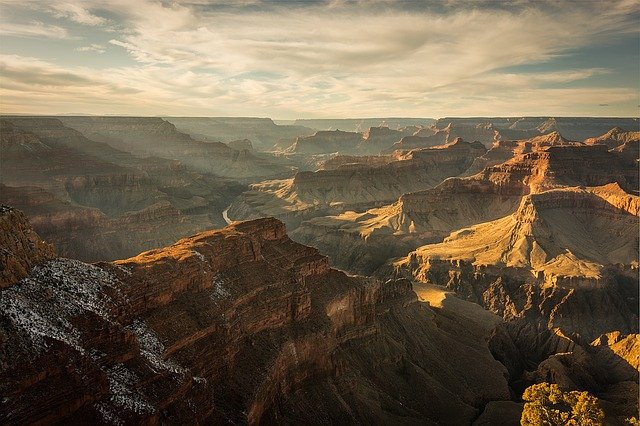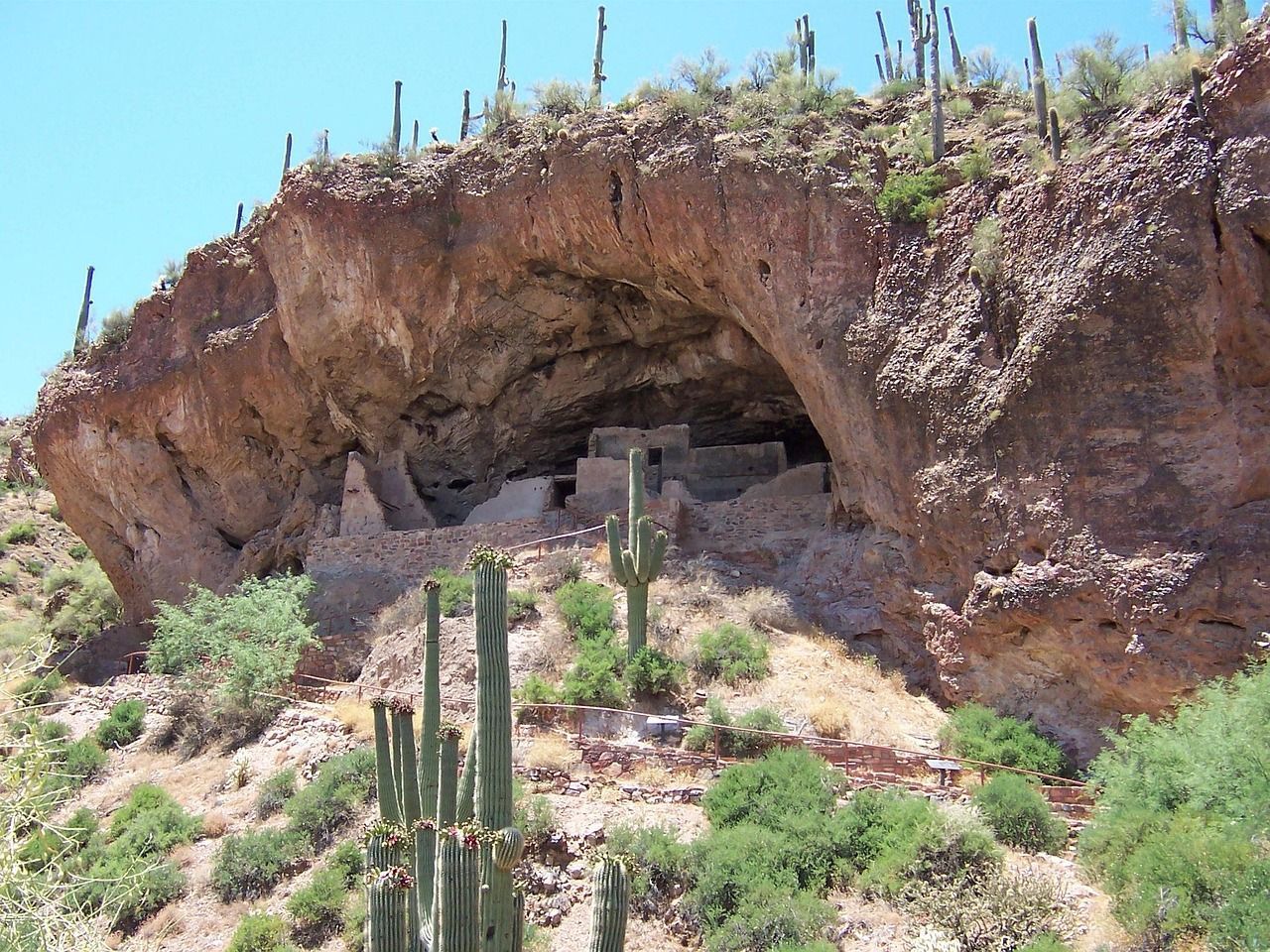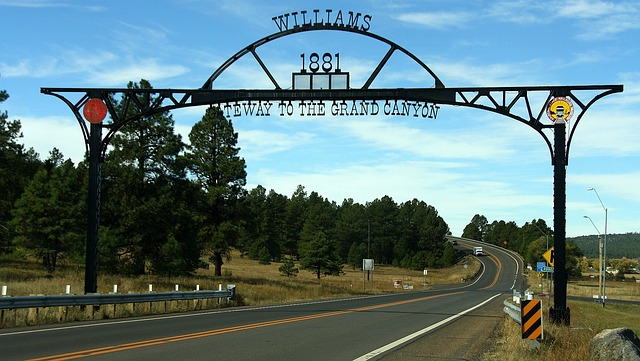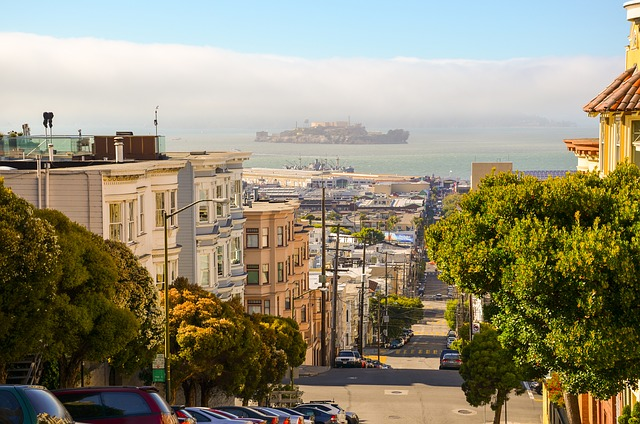The ultimate Phoenix to Grand Canyon road trip takes you between the two most famous destinations in Arizona.
A 270-mile Phoenix to Grand Canyon road trip travels up the spine of Arizona. You will pass through incredible national forests, ancient national monuments, historic towns, and beautiful, natural cities as you journey towards one of the most breathtaking and popular natural destinations on Earth.
Read on to find out all that awaits you on this incredible Arizona adventure.
The Ultimate Phoenix To Grand Canyon Road Trip: How Far Is It, What Is The Best Route, & How Long Will It Take To Get There?
The ultimate Phoenix to Grand Canyon road trip covers 270 miles (435 kilometres) and takes 4 hours and 40 minutes to drive.
The best route for a Phoenix to Grand Canyon road trip will see you set off heading east on Arizona State Route 202 and following it to Exit 13. Here you will go north on Arizona State Route 87 and follow it to the town of Wingfield, Arizona. Continue heading north on Lake Mary Road, which will take you to Flagstaff, Arizona.
From Flagstaff, head west on I-40 until you reach Exit 165, near Williams, Arizona. From here, you simply go north on Arizona State Route 64 until you reach your destination of Grand Canyon National Park.
Best Time For The Ultimate Phoenix To Grand Canyon Road Trip
The best time for the ultimate Phoenix to Grand Canyon road trip is between early May and mid-June.
This period virtually guarantees you will enjoy a pleasant climate and find all of the attractions open, both along the route and at your destination. You will also avoid the blistering temperatures and large crowds that are common in the height of summer, as well as the peak of wildfire season, which is usually from late August to the beginning of November each year in this area.

Best Place To Stop On The Ultimate Phoenix To Grand Canyon Road Trip
With the ultimate Phoenix to Grand Canyon road trip taking a little under 5 hours to drive, many people will plan to complete the trip in a single day.
However, not only will breaking the journey up across multiple days give you more time to enjoy all of the many great attractions on the route, but one destination simply has so much to offer that you will want to make an extended stay there to truly appreciate it. The destination in question? Flagstaff, Arizona.
Flagstaff, Arizona
Flagstaff is one of the most overlooked cities in Arizona and perhaps the entire United States. Known by multiple nicknames, including “the city of seven wonders” and “the city in the pines”, it is a fantastic hidden gem of a city, especially for people who like cities with a natural environment.
The “seven wonders” mentioned in one of its nicknames include attractions like the impressive Slide Rock State Park, Humphreys Peak, Sunset Crater Volcano National Monument, Wupatki National Monument, Walnut Canyon National Monument, Mormon Lake, and Coconino National Forest.
With so much to see and do in and around Flagstaff, you can see why this is a destination that requires a longer visit than just a quick stop, regardless of what your interests may be.
Best Hotel To Stay At In Flagstaff – Little America Hotel
The Little America Hotel is a beautiful, rustic hotel, designed in the style of a traditional log cabin and lodge. Set right on the edge of Coconino National Forest, it offers stunning views of its beautiful, natural surroundings from virtually every spot on the property.
Each of its rooms is beautifully decorated and furnished, and offers modern-day luxuries such as Wi-Fi and a big screen TV. The property then features a swimming pool where you can cool off from the hot Arizona sun and a fabulous restaurant where you can enjoy breakfast or dinner.

Top Attractions On The Ultimate Phoenix To Grand Canyon Road Trip
We will now guide you through our personal list of the 8 top attractions on the ultimate Phoenix to Grand Canyon road trip. This list will ensure that people of all tastes and interests have plenty of options to help keep them occupied as they travel from the Capital of Arizona towards Grand Canyon National Park.
Scottsdale, Arizona
Scottsdale, Arizona, is a vibrant desert city on the outskirts of Phoenix that is known for its upscale resorts, golf courses, spas, luxury shopping, art galleries, lively nightlife, and Southwestern charm.
The city's highlight is the historic Old Town, and its walkable streets are lined with boutiques, restaurants, and Western-themed attractions. Its thriving arts scene centres around the Scottsdale Museum of Contemporary Art, but there are many other galleries in the Arts District.
There is also plenty on offer for outdoor enthusiasts too, from hiking and rock climbing in the scenic McDowell Sonoran Preserve to hot air ballooning over the desert landscape. Add in annual events like the Scottsdale Arabian Horse Show and Barrett-Jackson Auto Auction, and virtually guaranteed warmth and sunshine whenever you visit, and Scottsdale is an exciting place to visit for anyone at any time.
Tempe, Arizona
Tempe, Arizona, is another city in the Phoenix Metropolitan Area. As the site of Arizona State University, one of the largest universities in the United States, it is a lively college town that blends youthful energy with a rich cultural and outdoor scene.
Mill Avenue is the heart of the city, and a varied selection of restaurants, bars, shops, and entertainment venues ensures it has something to offer for everyone.
The Tempe Center for the Arts and ASU Gammage then offer regular performances and exhibits to keep visitors occupied throughout the year. Popular annual festivals in Tempe include the Tempe Festival of the Arts and Ironman Arizona.
Tempe Town Lake heads up the city’s outdoor recreation offerings, with activities such as kayaking, paddleboarding, and hiking offered throughout the year. Papago Park then offers more hiking trails and great views from Hole-in-the-Rock, and cyclists can enjoy its extensive network of bike trails.
Mesa, Arizona
The last of the 3 cities in the Phoenix Metropolitan Area we will be examining, Mesa, Arizona, is the third-largest city in the state. It offers a vibrant mix of cultural attractions, outdoor adventures, and family-friendly activities, making it an appealing destination for tourists of all kinds.
Downtown Mesa is where you will find most of its attractions, such as destinations like Mesa Arts Center and its four theaters, five art galleries, and numerous studios, performances, and exhibitions.
Outdoor enthusiasts will appreciate the ease with which they can reach the attractions in the stunning Sonoran Desert landscape that surrounds Mesa. Superstition Mountains offers hiking trails like the Wind Cave Trail and its panoramic views of the valley, while Salt River is a great place for kayaking, swimming, and paddleboarding.
The i.d.e.a. Museum features interactive art exhibits that are ideal for people with children, and Organ Stop Pizza enables patrons to enjoy dinner while taking in performances on the world's largest Wurlitzer theater organ.
Tonto National Forest
Tonto National Forest is, at nearly 3 million acres, one of the largest national forests in the United States. Known for its diverse landscapes, it boasts sun-drenched Sonoran desert lowlands, forested mountain ranges, towering saguaro cacti, rugged canyons, dense pine forests, and scenic, panoramic vistas.
Locations like Salt River, Verde River, and Roosevelt Lake provide great opportunities for outdoor recreational activities like boating, kayaking, fishing, camping, off-roading, horseback riding, hiking, birdwatching, and more.
Meanwhile, Tonto Natural Bridge State Park features a spectacular natural travertine bridge that is truly a sight to behold. With the region being home to a diverse range of wildlife that includes species such as black bears, bald eagles, and javelinas, it is a truly fantastic stop for any nature and outdoor lovers.

Montezuma Castle National Monument
Montezuma Castle National Monument is a fabulously preserved ancient cliff dwelling built by the Sinagua people more than 800 years ago. It centres around a five-story, 20-room dwelling that has been built into a limestone cliff about 90 feet above the valley floor.
Visitors can walk a paved loop trail that offers excellent views of the cliff dwelling, complete with detailed interpretive signage that explains the site's history and significance. The visitor center then offers informative exhibits that give a glimpse inside the structure, which is off limits to the public.
A shaded picnic area nestled among the sycamores offers another great place to view the castle from, while nearby Montezuma Well is a natural limestone sinkhole that features additional ruins and further insight into the Sinagua people.
Coconino National Forest
At almost 2 million acres, Coconino National Forest it is the largest Ponderosa pine forest anywhere in North America. Throughout the forest you will find miles of hiking trails that weave through incredible, ecologically diverse scenery such as red rock formations of Sedona, alpine tundra, ancient volcanic fields, lush pine forests, serene desert vistas, and towering peaks.
The top attractions in Coconino National Forest include Humphreys Peak, which, at 12,633 feet, is the highest point in Arizona, Lava River Cave, a mile-long lava tube, and Palatki Heritage Site, with its ancient cliff dwellings and pictographs.
The diversity of wildlife present in the forest is then equally rich, with all manner of different species calling it home. With all of this on offer, it should come as no surprise that Coconino National Forest is a popular destination for activities like hiking, biking, fishing, and camping.
Williams, Arizona
Williams, Arizona, is one of the most famous and historic Route 66 towns, and a destination that is just bursting with cultural and historic attractions that will delight fans of both petrolania and Arizona history.
Pete’s Route 66 Gas Station Museum is a museum that boasts an extensive collection of vintage vehicles. The Route 66 Zipline is perfect for thrill seekers, as it lets you soar over Route 66. Bearizona Wildlife Park is then ideal for nature lovers, as it boasts species like bears, bison, mountain goats, birds of prey, and more for you to see up close.
Williams has so much to offer that we simply can’t include it all here. So, if you want to learn more about everything that Williams has to offer, we wrote a dedicated article on the topic, which you can read here.

Kaibab National Forest
Kaibab National Forest is a 1.6-million-acre natural preserve that spans parts of both the North Rim and the South Rim of the Grand Canyon. Its landscape offers a contrast to what you will see at the Grand Canyon itself, as it is filled with aspen, fir, juniper, oak, pine, and spruce forests and various bushes.
Beyond its landscape, Kaibab National Forest also features attractions like the stunning Scholz Lake and Historic Spring Valley Cabin, which was built in 1917 for the park rangers. It is then home to a diverse array of wildlife species.
Its inhabitants include Coues white-tailed deer, mule deer, elk, pronghorn, wild turkey, coyotes, cougars, bobcats, black bears, bison, chipmunks, ground squirrels, Abert's squirrels, porcupines, lizards, bats, rattlesnakes, and birds such as bluebirds, robins, Steller's jays, nuthatches, flickers, woodpeckers, crows, hummingbirds, ravens, and hawks.
Final Thoughts On The Ultimate Phoenix To Grand Canyon Road Trip
That concludes our guide to the ultimate Phoenix to Grand Canyon road trip. You should now have all of the information that you need on when to go, which route to use, how long it will take, and what to see and where to stay along the way, to make it the most enjoyable experience possible.
All you have left to do now is work out what to take with you and what your budget is, so you can start getting things booked and looking forward to enjoying it all for yourself as soon as possible.
If you need any more help planning your trip, we also have dedicated guides on what to do in Phoenix, Arizona, before you set off, and how to go about exploring Grand Canyon National Park in Style.


